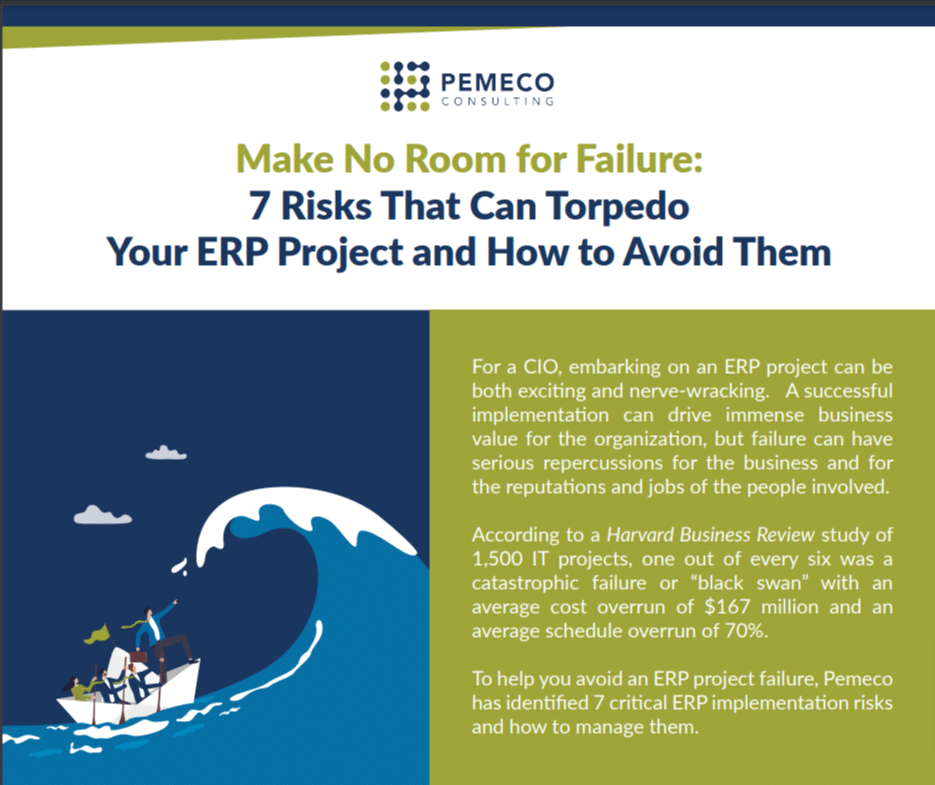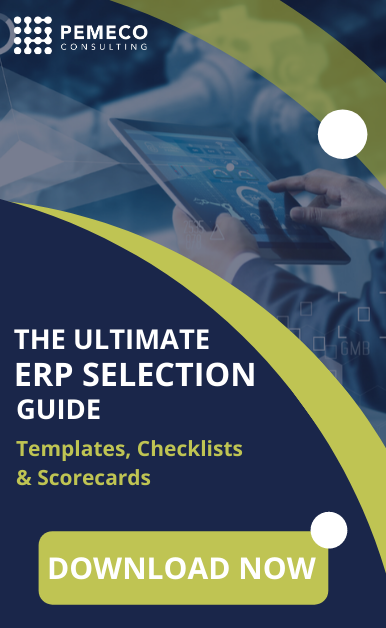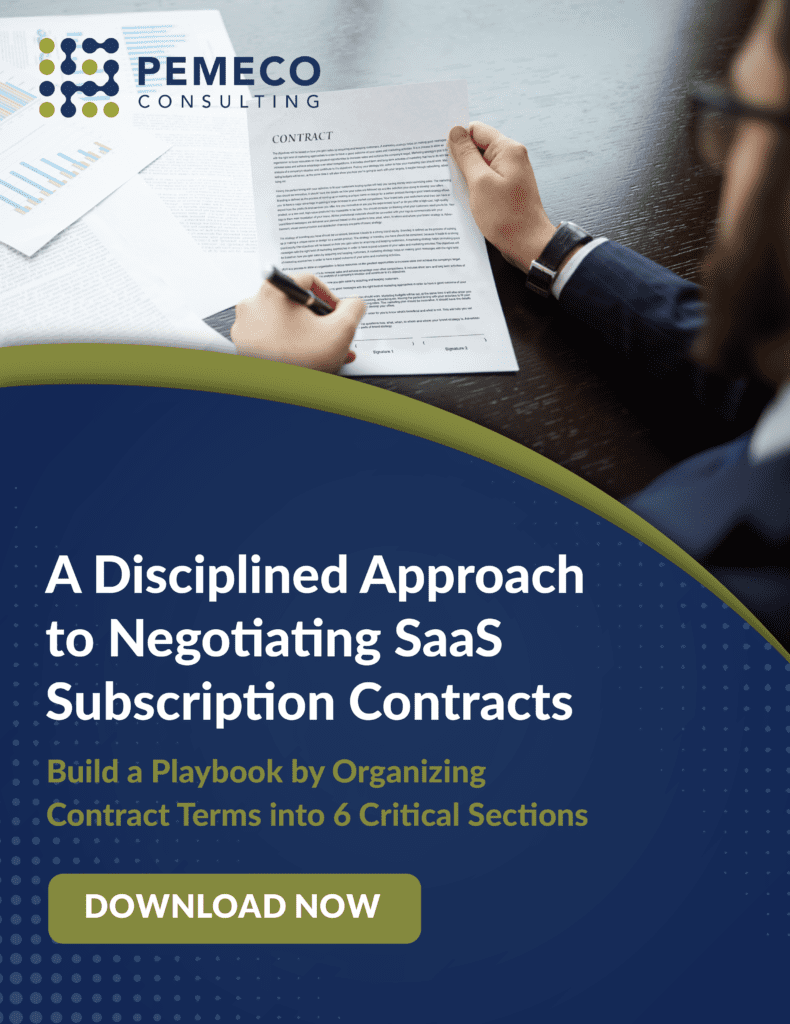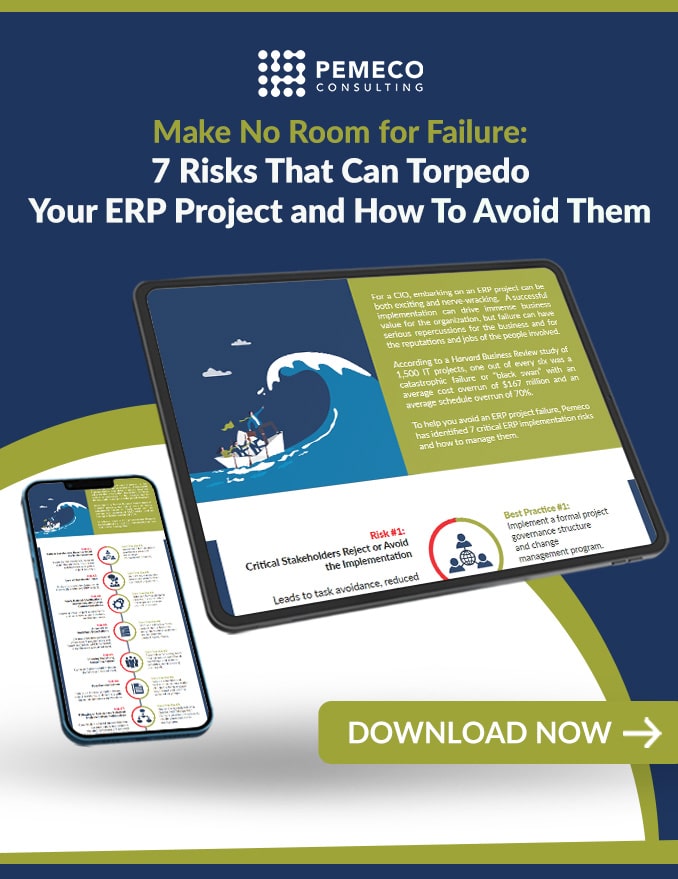The Company
The Client is a fast-growing Canadian aerospace company that designs and manufactures components for commercial and military aircraft. In 2008, the Client achieved an impressive year-over-year revenue growth of 30%.
ERP System Background
As a result of its growth, the Client had outgrown its Visual Manufacturing IT. It needed a full ERP suite that had stronger functionality with respect to supplier relationship management, production planning and regulatory compliance. It ultimately selected Infor’s Baan 5 ERP system.
In mid-2006, Pemeco and the Client began implementing the ERP system. On January 2, 2007, we successfully cut over to the new system. As with all implementations, however, “go-live” was just the beginning of this client’s journey to ERP-enhanced operations. In this case, the post-implementation challenges included:
- Change Management: the organization and its people needed to adapt to the new way of doing business
- Post-Implementation Optimization: business processes needed to be refined and business intelligence needed to be stronger
Challenge 1: Organizational Change Management – a Period of Adaptation
We had prepared the Client for the psychological ups-and-downs that accompany organizational changes. Over the last 30 years, we have witnessed a very specific and predictable psychological pattern of reactions that accompanies every ERP implementation. We call this pattern the “Emotional Curve”. The “Emotional Curve” represents the collective psychological dynamics of an organization during and after an ERP implementation.
[image]
One of our key challenges was breaking down the functional silo way of doing business, which subsisted from the pre-implementation period. To do this, we led group training sessions and ran mock scenarios to instill a culture of cross-functional information sharing.After the January 2007 cut-over, the Client predictably hit the bottom of the curve and experienced desperation. It had to scramble to meet the pressing demands of a growing business using a combination of new systems and processes with which it had limited experience. Habit breaking and habit forming activities were made all the more difficult by the fact that the change activities were hurting the business in the short-term. The Client had to be reminded that it was suffering short-term pain for the benefits of long-term gain.
Once the end-users understood how information sharing could make their jobs easier, they became committed to the ERP system. As they transitioned to the new system, the end-users climbed the up-slope of the “Emotional Curve” to recovery. They began to experience the first-hand benefits of the system and the revised organization structure.
Challenge 2: Process Optimization and Business Intelligence
We then shifted our emphasis to process optimization. We streamlined business processes procedures and implemented performance monitoring mechanisms. Examples of the optimization efforts included:
- Bar-coding: We implemented a bar-coding system on the shop floor. This enabled better planning, scheduling, inventory management and compliance with quality control regulations.
- Optimization of Accounts Payable Functionality: Initially, an ERP system restriction prevented the finance department from paying suppliers until a favorable quality control (QC) inspection was completed. Because of the delays, the Client often missed AP discount windows and occasionally incurred penalties for late payment. AP and QC business processes were altered and the system restriction was removed.
- Development of an Custom ERP-Interfacing Budget Application: The legacy practice involved a twice-annual budgeting process using Excel spreadsheets. This required manual inputting of sales forecasts, salaries, and costing data. The manual process resulted in errors and inconsistencies. Further, the variable nature of aerospace market conditions meant that the Client had to prepare multiple budget scenarios. The manual process required hundreds of hours of data entry and manipulation. We developed a budget application that electronically pulled data from the Baan ERP system. This eliminated manual data entry tasks and minimized related errors. Further, scenario-to-scenario copy functionality enabled simple what-if analyses. The application also offered financial reporting capabilities, allowing the Client to prepare income statements, cash flow statements, and balance sheet statements. The final, approved budget was ultimately uploaded to the ERP system to provide budget-to-actual comparative financial statements.
- Development of a Custom and ERP-Interfacing Planning Dashboard: Supply chain planning, shop scheduling, and shop capacity loading are three critical components of a manufacturer’s operations. The ERP system generated many reports but was unwieldy to work with. We developed a planning tool to provide flexible selection filters and sophisticated color-coding to highlight planning, supply chain, shop scheduling, and capacity loading problems, with drill-down to underlying details. By using the Planning Dashboard, the Client cut planning, procurement, shop scheduling and shop load efforts by 15% to 20%.
Conclusion
The Client has successfully adapted to the operational changes. It has also incorporated a philosophy of continuous improvement into its operations. Now, the Client consistently reviews its internal processes and demands better information from its ERP system. The Client understands that a strong competitive position in the ever-evolving aerospace industry requires it to be nimble, responsive and innovative. To achieve these goals, the Client has committed itself to operational excellence with the help of its ERP system.
Learn more about our ERP Action Plans, ERP Optimization and Training and Independent Infor services for ERP LN and Baan. Or, you can simply contact our ERP experts.






